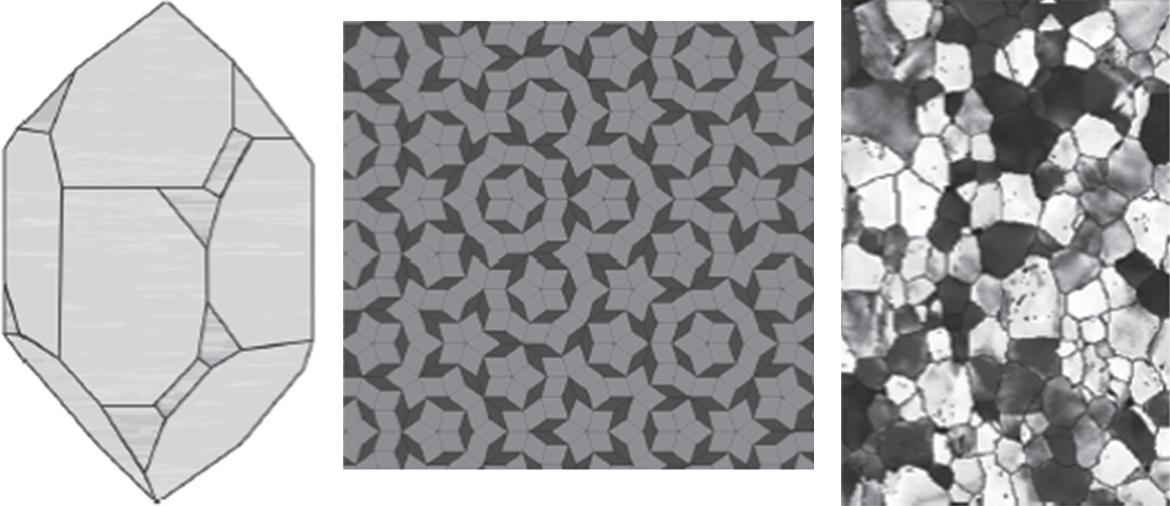Principles of Inorganic Materials Design 3rd
Edition
John N. Lalena
Visit to download the full and correct content document: https://ebookmass.com/product/principles-of-inorganic-materials-design-3rd-edition-jo hn-n-lalena/
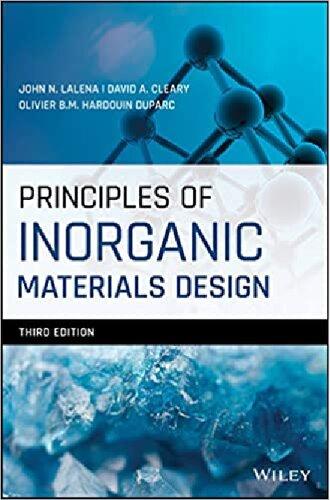
More products digital (pdf, epub, mobi) instant download maybe you interests ...
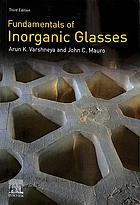
Fundamentals
of Inorganic Glasses 3rd Edition Mauro
https://ebookmass.com/product/fundamentals-of-inorganicglasses-3rd-edition-mauro/
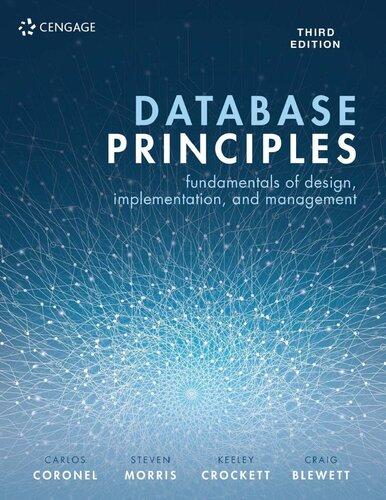
Database Principles: Fundamentals of Design, Implementation, and Management 3rd Edition Carlos Coronel
https://ebookmass.com/product/database-principles-fundamentalsof-design-implementation-and-management-3rd-edition-carloscoronel/

eTextbook 978-0134454177 Building Construction: Principles Materials and Systems (3rd Edition)
https://ebookmass.com/product/etextbook-978-0134454177-buildingconstruction-principles-materials-and-systems-3rd-edition/
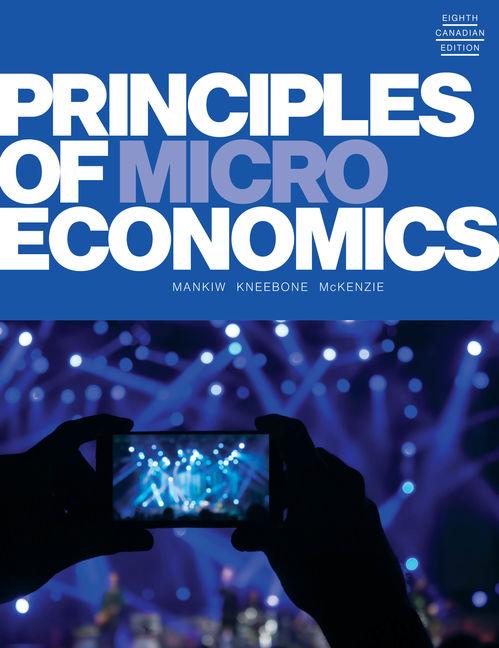
Principles of Microeconomics 8th Edition N. Gregory Mankiw
https://ebookmass.com/product/principles-of-microeconomics-8thedition-n-gregory-mankiw/
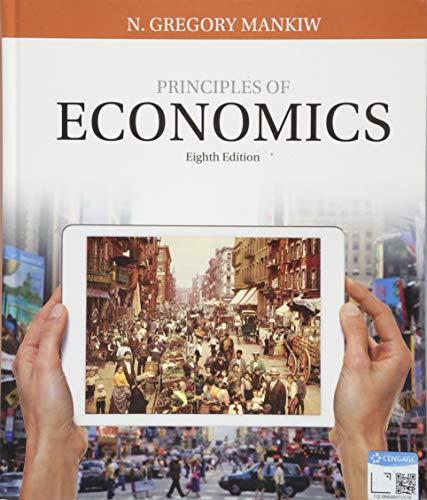
Principles
of Economics 8th Edition N Gregory Mankiw
https://ebookmass.com/product/principles-of-economics-8thedition-n-gregory-mankiw/
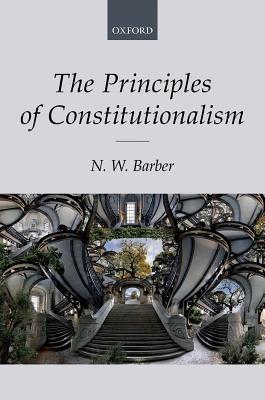
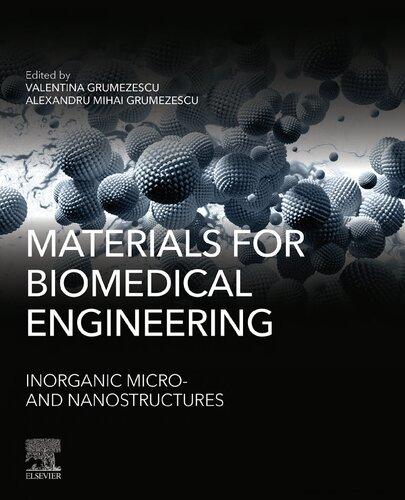
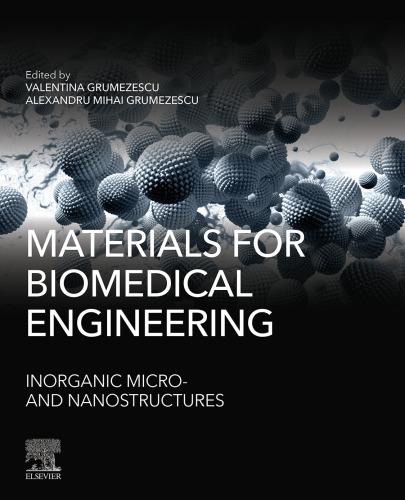
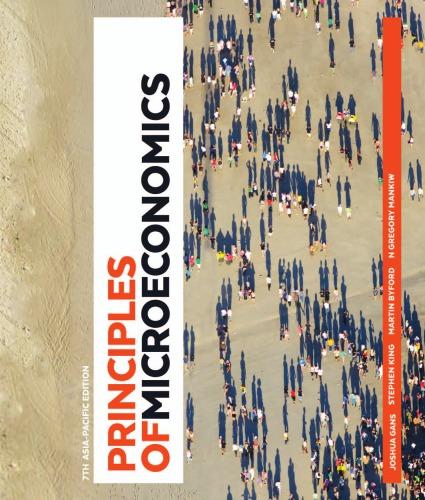
The Principles of Constitutionalism N W Barber
https://ebookmass.com/product/the-principles-ofconstitutionalism-n-w-barber/
Materials for Biomedical Engineering: Inorganic Microand Nanostructures
Valentina Grumezescu
https://ebookmass.com/product/materials-for-biomedicalengineering-inorganic-micro-and-nanostructures-valentinagrumezescu/
Materials for Biomedical Engineering - Inorganic Microand Nanostructures
Valentina Grumezescu
https://ebookmass.com/product/materials-for-biomedicalengineering-inorganic-micro-and-nanostructures-valentinagrumezescu-2/
Principles of Microeconomics, Asia-Pacific Edition N.
Gregory Mankiw
https://ebookmass.com/product/principles-of-microeconomics-asiapacific-edition-n-gregory-mankiw/
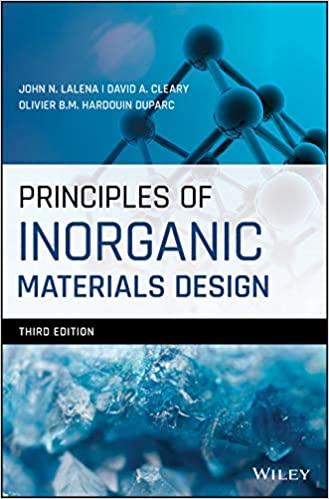
PrinciplesofInorganic MaterialsDesign
PrinciplesofInorganicMaterialsDesign
ThirdEdition
JohnN.Lalena PhysicalScientist
DavidA.Cleary GonzagaUniversity
OlivierB.M.HardouinDuparc ÉcolepolytechniqueInstitutPolytechniqueParis
Thiseditionfirstpublished2020 ©2020JohnWiley&SonsInc.
Editionhistory:
“JohnWiley&SonsInc.(1e,2005)”
“JohnWiley&SonsInc.(2e,2010)”
Allrightsreserved.Nopartofthispublicationmaybereproduced,storedinaretrievalsystem,ortransmitted,inanyform orbyanymeans,electronic,mechanical,photocopying,recordingorotherwise,exceptaspermittedbylaw.Adviceon howtoobtainpermissiontoreusematerialfromthistitleisavailableathttp://www.wiley.com/go/permissions.
TherightofJohnN.Lalena,DavidA.Cleary,andOlivierB.M.HardouinDuparctobeidentifiedastheauthorsofthis workhasbeenassertedinaccordancewithlaw.
RegisteredOffice
JohnWiley&Sons,Inc.,111RiverStreet,Hoboken,NJ07030,USA
EditorialOffice
111RiverStreet,Hoboken,NJ07030,USA
Fordetailsofourglobaleditorialoffices,customerservices,andmoreinformationaboutWileyproductsvisitusat www.wiley.com.
Wileyalsopublishesitsbooksinavarietyofelectronicformatsandbyprint-on-demand.Somecontentthatappearsin standardprintversionsofthisbookmaynotbeavailableinotherformats.
LimitofLiability/DisclaimerofWarranty
Inviewofongoingresearch,equipmentmodifications,changesingovernmentalregulations,andtheconstantflowof informationrelatingtotheuseofexperimentalreagents,equipment,anddevices,thereaderisurgedtoreviewand evaluatetheinformationprovidedinthepackageinsertorinstructionsforeachchemical,pieceofequipment,reagent, ordevicefor,amongotherthings,anychangesintheinstructionsorindicationofusageandforaddedwarningsand precautions.Whilethepublisherandauthorshaveusedtheirbesteffortsinpreparingthiswork,theymakeno representationsorwarrantieswithrespecttotheaccuracyorcompletenessofthecontentsofthisworkandspecifically disclaimallwarranties,includingwithoutlimitationanyimpliedwarrantiesofmerchantabilityorfitnessforaparticular purpose.Nowarrantymaybecreatedorextendedbysalesrepresentatives,writtensalesmaterialsorpromotional statementsforthiswork.Thefactthatanorganization,website,orproductisreferredtointhisworkasacitationand/or potentialsourceoffurtherinformationdoesnotmeanthatthepublisherandauthorsendorsetheinformationor servicestheorganization,website,orproductmayprovideorrecommendationsitmaymake.Thisworkissoldwiththe understandingthatthepublisherisnotengagedinrenderingprofessionalservices.Theadviceandstrategiescontained hereinmaynotbesuitableforyoursituation.Youshouldconsultwithaspecialistwhereappropriate.Further,readers shouldbeawarethatwebsiteslistedinthisworkmayhavechangedordisappearedbetweenwhenthisworkwaswritten andwhenitisread.Neitherthepublishernorauthorsshallbeliableforanylossofprofitoranyothercommercial damages,includingbutnotlimitedtospecial,incidental,consequential,orotherdamages.
LibraryofCongressCataloging-in-PublicationData
Names:Lalena,JohnN.author.|Cleary,DavidA.,1957– author.|Duparc, OlivierB.M.Hardouin,author.
Title:Principlesofinorganicmaterialsdesign/JohnN.Lalena,U.S. DepartmentofEnergy,DavidA.Cleary,GonzagaUniversity,OlivierB.M. HardouinDuparc,E’colePolytechnique.
Description:Thirdedition.|Hoboken,NJ,USA:Wiley,2020.|Includes bibliographicalreferencesandindex.
Identifiers:LCCN2019051901(print)|LCCN2019051902(ebook)|ISBN 9781119486831(hardback)|ISBN9781119486916(adobepdf)|ISBN 9781119486763(epub)
Subjects:LCSH:Chemistry,Inorganic–Materials.|Chemistry, Technical–Materials.
Classification:LCCQD151.3.L352020(print)|LCCQD151.3(ebook)|DDC 546–dc23
LCrecordavailableathttps://lccn.loc.gov/2019051901
LCebookrecordavailableathttps://lccn.loc.gov/2019051902
CoverDesign:Wiley
CoverImages:Molecularmodel,illustration©VICTORHABBICKVISIONS/SCIENCEPHOTOLIBRARY/Getty Images,Bluecrystals©assistantua/GettyImages
Setin9.5/12.5ptSTIXTwoTextbySPiGlobal,Pondicherry,India
PrintedinUnitedStatesofAmerica
Contents
ForewordtoSecondEdition xiii
ForewordtoFirstEdition xv
PrefacetoThirdEdition xix
PrefacetoSecondEdition xx
PrefacetoFirstEdition xxi Acronyms xxiii
1CrystallographicConsiderations 1
1.1DegreesofCrystallinity 1
1.1.1MonocrystallineSolids 2
1.1.2QuasicrystallineSolids 3
1.1.3PolycrystallineSolids 4
1.1.4SemicrystallineSolids 5
1.1.5AmorphousSolids 8
1.2BasicCrystallography 8
1.2.1CrystalGeometry 8
1.2.1.1TypesofCrystallographicSymmetry 12
1.2.1.2SpaceGroupSymmetry 17
1.2.1.3LatticePlanesandDirections 27
1.3Single-CrystalMorphologyandItsRelationshiptoLatticeSymmetry 32
1.4TwinnedCrystals,GrainBoundaries,andBicrystallography 37
1.4.1TwinnedCrystalsandTwinning 37
1.4.2CrystallographicOrientationRelationshipsinBicrystals 39
1.4.2.1TheCoincidenceSiteLattice 39
1.4.2.2EquivalentAxis–AnglePairs 44
1.5AmorphousSolidsandGlasses 46
1.5.1OxideGlasses 49
1.5.2MetallicGlassesandMetal–OrganicFrameworkGlasses 51
1.5.3Aerogels 53 PracticeProblems 53 References 55
2MicrostructuralConsiderations 57
2.1MaterialsLengthScales 57
2.1.1ExperimentalResolutionofMaterialFeatures 61
2.2GrainBoundariesinPolycrystallineMaterials 63
2.2.1GrainBoundaryOrientations 63
2.2.2DislocationModelofLowAngleGrainBoundaries 65
2.2.3GrainBoundaryEnergy 66
2.2.4SpecialTypesof “Low-Energy” Boundaries 68
2.2.5GrainBoundaryDynamics 69
2.2.6RepresentingOrientationDistributionsinPolycrystallineAggregates 70
2.3MaterialsProcessingandMicrostructure 72
2.3.1ConventionalSolidification 72
2.3.1.1GrainHomogeneity 74
2.3.1.2GrainMorphology 76
2.3.1.3ZoneMeltingTechniques 78
2.3.2DeformationProcessing 79
2.3.3ConsolidationProcessing 79
2.3.4Thin-FilmFormation 80
2.3.4.1Epitaxy 81
2.3.4.2PolycrystallinePVDThinFilms 81
2.3.4.3PolycrystallineCVDThinFilms 83
2.4MicrostructureandMaterialsProperties 83
2.4.1MechanicalProperties 83
2.4.2TransportProperties 86
2.4.3MagneticandDielectricProperties 90
2.4.4ChemicalProperties 92
2.5MicrostructureControlandDesign 93 PracticeProblems 96 References 96
3CrystalStructuresandBindingForces 99
3.1StructureDescriptionMethods 99
3.1.1ClosePacking 99
3.1.2Polyhedra 103
3.1.3The(Primitive)UnitCell 103
3.1.4SpaceGroupsandWyckoffPositions 104
3.1.5StrukturberichtSymbols 104
3.1.6PearsonSymbols 105
3.2CohesiveForcesinSolids 106
3.2.1IonicBonding 106
3.2.2CovalentBonding 108
3.2.3DativeBonds 110
3.2.4MetallicBonding 111
3.2.5AtomsandBondsasElectronChargeDensity 112
3.3ChemicalPotentialEnergy 113
3.3.1LatticeEnergyforIonicCrystals 114
3.3.2TheBorn–HaberCycle 119
3.3.3Goldschmidt’sRulesandPauling’sRules 120
3.3.4TotalEnergy 122
3.3.5ElectronicOriginofCoordinationPolyhedrainCovalentCrystals 124
3.4CommonStructureTypes 127
3.4.1Iono-covalentSolids 128
3.4.1.1 AX Compounds 128
3.4.1.2 AX2 Compounds130
3.4.1.3 AX6 Compounds132
3.4.1.4 ABX2 Compounds132
3.4.1.5 AB2X4 Compounds(SpinelandOlivineStructures)134
3.4.1.6 ABX3 Compounds(PerovskiteandRelatedPhases)135
3.4.1.7 A2B2O5 (ABO2.5) Compounds(Oxygen-DeficientPerovskites)137
3.4.1.8 AxByOz Compounds(Bronzes)139
3.4.1.9 A2B2X7 Compounds(Pyrochlores)139
3.4.1.10SilicateCompounds 140
3.4.1.11PorousStructures 141
3.4.2MetalCarbides,Silicides,Borides,Hydrides,andNitrides 144
3.4.3MetallicAlloysandIntermetallicCompounds 144
3.4.3.1ZintlPhases 147
3.4.3.2NonpolarBinaryIntermetallicPhases 149
3.4.3.3TernaryIntermetallicPhases 151
3.5StructuralDisturbances 153
3.5.1IntrinsicPointDefects 154
3.5.2ExtrinsicPointDefects 155
3.5.3StructuralDistortions 156
3.5.4BondValenceSumCalculations 158
3.6StructureControlandSyntheticStrategies 162 PracticeProblems 165 References 167
4TheElectronicLevelI:AnOverviewofBandTheory 171
4.1TheMany-BodySchrödingerEquationandHartree–Fock 171
4.2ChoiceofBoundaryConditions:Born’sConditions 177
4.3Free-ElectronModelforMetals:FromDrude(Classical)toSommerfeld (Fermi–Dirac) 179
4.4Bloch’sTheorem,BlochWaves,EnergyBands,andFermiEnergy 180
4.5ReciprocalSpaceandBrillouinZones 182
4.6ChoicesofBasisSetsandBandStructurewithApplicativeExamples 188
4.6.1FromtheFree-ElectronModeltothePlaneWaveExpansion 189
4.6.2FermiSurface,BrillouinZoneBoundaries,andAlkaliMetalsversusCopper 191
4.6.3UnderstandingMetallicPhaseStabilityinAlloys 193
4.6.4TheLocalizedOrbitalBasisSetMethod 195
4.6.5UnderstandingBandStructureDiagramwithRheniumTrioxide 196
4.6.6ProbingDOSBandStructureinMetallicAlloys 199
4.7BreakdownoftheIndependent-ElectronApproximation 200
4.8DensityFunctionalTheory:TheSuccessortotheHartree–FockApproachinMaterials Science 202
4.9TheContinuousQuestforBetterDFTXCFunctionals 205
4.10VanderWaalsForcesandDFT 208
PracticeProblems 210
References 210
5TheElectronicLevelII:TheTight-BindingElectronicStructureApproximation 213
5.1TheGeneralLCAOMethod 214
5.2ExtensionoftheLCAOTreatmenttoCrystallineSolids 219
5.3OrbitalInteractionsinMonatomicSolids 221
5.3.1 σ-BondingInteractions 221
5.3.2 π-BondingInteractions 225
5.4Tight-BindingAssumptions 229
5.5QualitativeLCAOBandStructures 232
5.5.1Illustration1:TransitionMetalOxideswithVertex-SharingOctahedra 236
5.5.2Illustration2:ReducedDimensionalSystems 238
5.5.3Illustration3:TransitionMetalMonoxideswithEdge-SharingOctahedra 240
5.5.4Corollary 243
5.6TotalEnergyTight-BindingCalculations 244 PracticeProblems 246 References 246
6TransportProperties 249
6.1AnIntroductiontoTensors 249
6.2MicroscopicTheoryofElectricalTransportinCeramics:TheRoleofPointDefects 254
6.2.1Oxygen-Deficient/MetalExcessandMetal-Deficient/OxygenExcessOxides 256
6.2.2SubstitutionsbyAliovalentCationswithValenceIsoelectronicity 261
6.2.3SubstitutionsbyIsovalentCationsThatAreNotValenceIsoelectronic 263
6.2.4NitrogenVacanciesinNitrides 266
6.3ThermalConductivity 268
6.3.1TheFreeElectronContribution 269
6.3.2ThePhononContribution 271
6.4ElectricalConductivity 274
6.4.1BandStructureConsiderations 278
6.4.1.1Conductors 278
6.4.1.2Insulators 279
6.4.1.3Semiconductors 281
6.4.1.4Semimetals 290
6.4.2Thermoelectric,Photovoltaic,andMagnetotransportProperties 292
6.4.2.1Thermoelectrics 292
6.4.2.2Photovoltaics 298
6.4.2.3GalvanomagneticEffectsandMagnetotransportProperties 301
6.4.3Superconductors 303
6.4.4ImprovingBulkElectricalConductioninPolycrystalline,Multiphasic,and CompositeMaterials 307
6.5MassTransport 308
6.5.1AtomicDiffusion 309
6.5.2IonicConduction 316 PracticeProblems 321 References 322
7HoppingConductionandMetal–InsulatorTransitions 325
7.1CorrelatedSystems 327
7.1.1TheMott–HubbardInsulatingState 329
7.1.2Charge-TransferInsulators 334
7.1.3MarginalMetals 334
7.2AndersonLocalization 336
7.3ExperimentallyDistinguishingDisorderfromElectronCorrelation 340
7.4TuningtheM–ITransition 343
7.5OtherTypesofElectronicTransitions 345 PracticeProblems 347 References 347
8MagneticandDielectricProperties 349
8.1PhenomenologicalDescriptionofMagneticBehavior 351
8.1.1MagnetizationCurves 354
8.1.2SusceptibilityCurves 355
8.2AtomicStatesandTermSymbolsofFreeIons 359
8.3AtomicOriginofParamagnetism 365
8.3.1OrbitalAngularMomentumContribution:TheFreeIonCase 366
8.3.2SpinAngularMomentumContribution:TheFreeIonCase 367
8.3.3TotalMagneticMoment:TheFreeIonCase 368
8.3.4Spin–OrbitCoupling:TheFreeIonCase 368
8.3.5SingleIonsinCrystals 371
8.3.5.1OrbitalMomentumQuenching 371
8.3.5.2SpinMomentumQuenching 373
8.3.5.3TheEffectofJTDistortions 373
8.3.6Solids 374
8.4Diamagnetism 376
8.5SpontaneousMagneticOrdering 377
8.5.1ExchangeInteractions 379
8.5.1.1DirectExchangeandSuperexchangeInteractionsinMagneticInsulators 382
8.5.1.2IndirectExchangeInteractions 387
8.5.2ItinerantFerromagnetism 390
8.5.3NoncollinearSpinConfigurationsandMagnetocrystallineAnisotropy 394
8.5.3.1GeometricFrustration 394
8.5.3.2MagneticAnisotropy 397
8.5.3.3MagneticDomains 398
8.5.4FerromagneticPropertiesofAmorphousMetals 401
8.6MagnetotransportProperties 401
8.6.1TheDoubleExchangeMechanism 402
8.6.2TheHalf-MetallicFerromagnetModel 403
8.7Magnetostriction 404
8.8DielectricProperties 405
8.8.1TheMicroscopicEquations 407
8.8.2Piezoelectricity 408
8.8.3Pyroelectricity 414
8.8.4Ferroelectricity 416 PracticeProblems 421 References 422
9OpticalPropertiesofMaterials 425
9.1Maxwell’sEquations 425
9.2RefractiveIndex 428
9.3Absorption 436
9.4NonlinearEffects 441
9.5Summary 446 PracticeProblems 446 References 447
10MechanicalProperties 449
10.1StressandStrain 449
10.2Elasticity 452
10.2.1TheElasticityTensors 455
10.2.2ElasticallyIsotropicandAnisotropicSolids 459
10.2.3TheRelationBetweenElasticityandtheCohesiveForcesinaSolid 465
10.2.3.1BulkModulus 466
10.2.3.2Rigidity(Shear)Modulus 467
10.2.3.3Young’sModulus 470
10.2.4Superelasticity,Pseudoelasticity,andtheShapeMemoryEffect 473
10.3Plasticity 475
10.3.1TheDislocation-BasedMechanismtoPlasticDeformation 481
10.3.2PolycrystallineMetals 487
10.3.3BrittleandSemi-brittleSolids 489
10.3.4TheCorrelationBetweentheElectronicStructureandthePlasticity ofMaterials 490
10.4Fracture 491 PracticeProblems 494 References 495
11PhaseEquilibria,PhaseDiagrams,andPhaseModeling 499
11.1ThermodynamicSystemsandEquilibrium 500
11.1.1EquilibriumThermodynamics 504
11.2ThermodynamicPotentialsandtheLaws 507
11.3UnderstandingPhaseDiagrams 510
11.3.1UnarySystems 510
11.3.2BinarySystems 511
11.3.3TernarySystems 518
11.3.4MetastableEquilibria 522
11.4ExperimentalPhaseDiagramDeterminations 522
11.5PhaseDiagramModeling 523
11.5.1GibbsEnergyExpressionsforMixturesandSolidSolutions 524
11.5.2GibbsEnergyExpressionsforPhaseswithLong-RangeOrder 527
11.5.3OtherContributionstotheGibbsEnergy 530
11.5.4PhaseDiagramExtrapolations:TheCALPHADMethod 531 PracticeProblems 534 References 535
12SyntheticStrategies 537
12.1SyntheticStrategies 538
12.1.1DirectCombination 538
12.1.2LowTemperature 540
12.1.2.1Sol–Gel 540
12.1.2.2Solvothermal 543
12.1.2.3Intercalation 544
12.1.3Defects 546
12.1.4CombinatorialSynthesis 548
12.1.5SpinodalDecomposition 548
12.1.6ThinFilms 550
12.1.7PhotonicMaterials 552
12.1.8Nanosynthesis 553
12.1.8.1LiquidPhaseTechniques 554
12.1.8.2Vapor/AerosolMethods 556
12.1.8.3CombinedStrategies 556
12.2Summary 558
PracticeProblems 559
References 559
13AnIntroductiontoNanomaterials 563
13.1HistoryofNanotechnology 564
13.2NanomaterialsProperties 565
13.2.1ElectricalProperties 566
13.2.2MagneticProperties 567
13.2.3OpticalProperties 567
13.2.4ThermalProperties 568
13.2.5MechanicalProperties 569
13.2.6ChemicalReactivity 570
13.3MoreonNanomaterialsPreparativeTechniques 572
13.3.1Top-DownMethodsfortheFabricationofNanocrystallineMaterials 572
13.3.1.1NanostructuredThinFilms 572
13.3.1.2NanocrystallineBulkPhases 573
13.3.2Bottom-UpMethodsfortheSynthesisofNanostructuredSolids 574
13.3.2.1Precipitation 575
13.3.2.2HydrothermalTechniques 576
13.3.2.3Micelle-AssistedRoutes 577
13.3.2.4Thermolysis,Photolysis,andSonolysis 580
13.3.2.5Sol–GelMethods 581
13.3.2.6PolyolMethod 582
13.3.2.7High-TemperatureOrganicPolyolReactions(IBMNanoparticleSynthesis) 584
13.3.2.8AdditiveManufacturing(3DPrinting) 584
References 586
14IntroductiontoComputationalMaterialsScience 589
14.1AShortHistoryofComputationalMaterialsScience 590
14.1.11945–1965:TheDawnofComputationalMaterialsScience 591
14.1.21965–2000:SteadyProgressThroughContinuedAdvancesinHardwareand Software 595
14.1.32000–Present:High-PerformanceandCloudComputing 598
14.2SpatialandTemporalScales,ComputationalExpense,andReliabilityofSolid-State Calculations 600
14.3IllustrativeExamples 604
14.3.1ExplorationoftheLocalAtomicStructureinMulti-principalElementAlloysby QuantumMolecularDynamics 604
14.3.2MagneticPropertiesofaSeriesofDoublePerovskiteOxides A2BCO6 (A =Sr,Ca; B =Cr; C =Mo,Re,W)byMonteCarloSimulationsintheFrameworkofthe IsingModel 606
14.3.3CrystalPlasticityFiniteElementMethod(CPFEM)AnalysisforModelingPlasticityin PolycrystallineAlloys 613 References 617
15CaseStudyI:TiO2 619
15.1Crystallography 619
15.2Microstructure 623
15.3Bonding 626
15.4ElectronicStructure 627
15.5Transport 628
15.6Metal–InsulatorTransitions 632
15.7MagneticandDielectricProperties 632
15.8OpticalProperties 634
15.9MechanicalProperties 635
15.10PhaseEquilibria 636
15.11Synthesis 638
15.12Nanomaterial 639
PracticeQuestions 639 References 640
16CaseStudyII:GaN 643
16.1Crystallography 643
16.2Microstructure 646
16.3Bonding 647
16.4ElectronicStructure 647
16.5Transport 648
16.6Metal–InsulatorTransitions 650
16.7MagneticandDielectricProperties 652
16.8OpticalProperties 652
16.9MechanicalProperties 653
16.10PhaseEquilibria 654
16.11Synthesis 654
16.12Nanomaterial 656
PracticeQuestions 657 References 658
AppendixA:Listofthe230SpaceGroups 659
AppendixB:The32CrystalSystemsandthe47PossibleForms 665
AppendixC:PrinciplesofTensors 667
AppendixD:SolutionstoPracticeProblems 679
Index 683
ForewordtoSecondEdition
Materialsscienceisoneofthebroadestoftheappliedscienceandengineeringfieldssinceituses conceptsfromsomanydifferentsubjectareas.Chemistryisoneofthekeyfieldsofstudy,andin manymaterialsscienceprograms,studentsmusttakegeneralchemistryasaprerequisiteforallbut themostbasicofsurveycourses.However,thatistypicallythelasttruechemistrycoursethatthey take.Theremainderoftheirchemistrytrainingisaccomplishedintheirmaterialsclasses.Thishas servedthefieldwellformanyyears,butoverthepastcoupleofdecades,newmaterialsdevelopmenthasbecomemoreheavilydependentuponsyntheticchemistry.Thissecondeditionof PrinciplesofInorganicMaterialsDesign servesasafinetexttointroducethematerialsstudent tothefundamentalsofdesigningmaterialsthroughsyntheticchemistryandthechemisttosome oftheissuesinvolvedinmaterialsdesign.
WhenIobtainedmyBSinceramicengineeringin1981,theprimaryfieldsofmaterialsscience –ceramics,metals,polymers,andsemiconductors – weregenerallytaughtinseparatedepartments, althoughtherewasfrequentlysomeoverlap.Thiswasparticularlytrueattheundergraduatelevel, althoughgraduateprogramsfrequentlyhadmoresubjectoverlap.Duringthe1980s,manyofthese departmentsmergedtoformmaterialsscienceandengineeringdepartmentsthatbegantotakea moreintegratedapproachtothefield,althoughchemicalandelectricalengineeringprograms tendedtocoverpolymersandsemiconductorsinmoredepth.Thistrendcontinuedinthe1990s andincludedthewritingoftextssuchas TheProductionofInorganicMaterials byEvansand DeJonghe(PrenticeHallCollegeDivision,1991),whichfocusedontraditionalproductionmethods.Syntheticchemicalapproachesbecamemoreimportantasthedecadeprogressedandacademiabegantoaddressthisintheclassroom,particularlyatthegraduatelevel.Thefirsteditionof PrinciplesofInorganicMaterialsDesign strovetomakethismaterialavailabletotheupperdivision undergraduatestudent.
Thesecondeditionof PrinciplesofInorganicMaterialsDesign correctsseveralgapsinthefirst editiontoconvertitfromaverygoodcompilationofthefieldintoatextthatisveryusablein theundergraduateclassroom.Perhapsthebiggestoftheseistheadditionofpracticeproblems attheendofeverychaptersincethesecondbestwaytolearnasubjectistoapplyittoproblems (thebestistoteachit),andthisremovestheburdenofcreatingtheproblemsfromtheinstructor. Chapter1,CrystallographicConsiderations,isnewandbothreviewsthebasicinformationinmost introductorymaterialscoursesandclearlypresentsthemoreadvancedconceptssuchasthemathematicaldescriptionofcrystalsymmetrythataretypicallycoveredincoursesoncrystallographyof physicalchemistry.Chapter10,MechanicalProperties,hasalsobeenexpandedsignificantlyto provideboththebasicconceptsneededbythoseapproachingthetopicforthefirsttimeandthe solidmathematicaltreatmentneededtorelatethemechanicalpropertiestoatomicbonding,
crystallography,andothermaterialpropertiestreatedinpreviouschapters.Thisisparticularly importantasdevicesusesmalleractivevolumesofmaterial,sincethisseldomresultsinthematerialsbeinginastress-freestate.
Insummary,thesecondeditionof PrinciplesofInorganicMaterialsDesign isaverygoodtextfor severalapplications:afirstmaterialscourseforchemistryandphysicsstudents,aconsolidated materialschemistrycourseformaterialssciencestudents,andasecondmaterialscourseforother engineeringandappliedsciencestudents.Italsoservesasthebackgroundmaterialtopursuethe chemicalroutestomakethesenewmaterialsdescribedintextssuchas InorganicMaterialsSynthesisandFabrication byLalenaandCleary(Wiley,2008).Suchcoursesarecriticaltoinsurethat studentsfromdifferentdisciplinescancommunicateastheymoveintoindustryandfacetheneed todesignnewmaterialsorreducecoststhroughsyntheticchemicalroutes.
MartinW.Weiser
MartinearnedhisBSinceramicengineeringfromOhioStateUniversityandMSandPhDin MaterialsScienceandMineralEngineeringfromtheUniversityofCalifornia,Berkeley.AtBerkeley heconductedfundamentalresearchonsinteringofpowdercompactsandceramicmatrixcomposites.AftergraduationhejoinedtheUniversityofNewMexico(UNM)wherehewasavisitingassistantprofessorinchemicalengineeringandthenassistantprofessorinmechanicalengineering.At UNMhetaughtintroductoryandadvancedmaterialsscienceclassestostudentsfromallbranches ofengineering.HecontinuedhisresearchinceramicfabricationaspartoftheCenterforMicroEngineeredCeramicsandalsobranchedoutintosoldermetallurgyandbiomechanicsincollaborationwithcolleaguesfromSandiaNationalLaboratoriesandtheUNMSchoolofMedicine, respectively.
MartinjoinedJohnsonMattheyElectronicsinatechnicalservicerolesupportingtheDiscrete PowerProductsGroup(DPPG).InthisrolehealsoinitiatedJME’seffortstodevelopPb-freesolders forpowerdieattachthatcametofruitionincollaborationwithJohnN.Lalenaseveralyearslater afterJMEwasacquiredbyHoneywell.Martinspentseveralyearsastheproductmanagerforthe DPPGandthenjoinedtheSixSigmaPlusorganizationafterearninghisSixSigmaBlackBeltworkingonpolymer/metalcompositethermalinterfacematerials(TIMs).Hespentthelastseveralyears intheR&Dgroupasbothagroupmanagerandprinciplescientistwhereheleadthedevelopmentof improvedPb-freesoldersandnewTIMs.
ForewordtoFirstEdition
Whereassolid-statephysicsisconcernedwiththemathematicaldescriptionofthevariedphysical phenomenathatsolidsexhibitandthesolid-statechemistisinterestedinprobingtherelationships betweenstructuralchemistryandphysicalphenomena,thematerialsscientisthasthetaskofusing thesedescriptionsandrelationshipstodesignmaterialsthatwillperformspecifiedengineering functions.However,thephysicistandthechemistareoftencalledupontoactasmaterialdesigners, andthepracticeofmaterialsdesigncommonlyrequirestheexplorationofnovelchemistrythatmay leadtothediscoveryofphysicalphenomenaoffundamentalimportanceforthebodyofsolid-state physics.Icitethreeillustrationswhereanengineeringneedhasledtonewphysicsandchemistryin thecourseofmaterialsdesign.
In1952,IjoinedagroupattheMITLincolnLaboratorythathadbeenchargedwiththetaskof developingasquareB–Hhysteresisloopinaceramicferrospinelthatcouldhaveitsmagnetization reversedinlessthan1 μsbyanappliedmagneticfieldstrengthlessthantwicethecoercivefield strength.Atthattime,thephenomenonofasquareB–Hloophadbeenobtainedinafewironalloys byrollingthemintotapessoastoalignthegrains,andhencetheeasymagnetizationdirections, alongtheaxisofthetape.TheobservationofasquareB–HloopledJayForrester,anelectrical engineer,toinventthecoincident-current,random-accessmagneticmemoryforthedigitalcomputersince,atthattime,theonlymemoryavailablewasa16×16byteelectrostaticstoragetube. Unfortunately,thealloytapesgavetooslowaswitchingspeed.Asanelectricalengineer,JayForresterassumedtheproblemwaseddy-currentlossesinthetapes,sohehadturnedtotheferrimagneticferrospinelsthatwereknowntobemagneticinsulators.However,thepolycrystalline ferrospinelsareceramicsthatcannotberolled!Nevertheless,theAirForcehadfinancedthe MITLincolnLaboratorytodevelopanairdefensesystemofwhichthedigitalcomputerwasto beakeycomponent.Therefore,JayForresterwasabletoputtogetheraninterdisciplinaryteam ofelectricalengineers,ceramists,andphysiciststorealizehisrandom-accessmagneticmemory withceramicferrospinels.
Themagneticmemorywasachievedbyacombinationofsystematicempiricism,carefulmaterialscharacterization,theoreticalanalysis,andtheemergenceofanunanticipatedphenomenonthat provedtobeastrokeofgoodfortune.Asystematicmappingofthestructural,magnetic,andswitchingpropertiesoftheMg–Mn–Feferrospinelsasafunctionoftheirheattreatmentsrevealedthatthe spinels,inonepartofthephasediagram,weretetragonalratherthancubicandthatcompositions, justonthecubicsideofthecubic–tetragonalphaseboundary,yieldsufficientlysquareB–Hloopsif givenacarefullycontrolledheattreatment.Thisobservationledmetoproposethatthetetragonal distortionwasduetoacooperativeorbitalorderingontheMn3+ ionsthatwouldliftthecubic-field orbitaldegeneracy;cooperativityofthesitedistortionsminimizesthecostinelasticenergyand leadstoadistortionoftheentirestructure.Thisphenomenonisnowknownasacooperative
Jahn–TellerdistortionsinceJahnandTellerhadearlierpointedoutthatamoleculeormolecular complex,havinganorbitaldegeneracy,wouldloweritsenergybydeformingitsconfigurationtoa lowersymmetrythatremovedthedegeneracy.Armedwiththisconcept,Iwasablealmostimmediatelytoapplyittointerpretthestructureandtheanisotropicmagneticinteractionsthathadbeen foundinthemanganese–oxideperovskitessincetheorbitalorderrevealedthebasisforspecifying therulesforthesignofamagneticinteractionintermsoftheoccupanciesoftheoverlappingorbitalsresponsiblefortheinteratomicinteractions.TheserulesarenowknownastheGoodenough–Kanamorirulesforthesignofasuperexchangeinteraction.Thusanengineeringproblem promptedthediscoveryanddescriptionoftwofundamentalphenomenainsolidsthateversince havebeenusedbychemistsandphysiciststointerpretstructuralandmagneticphenomenaintransitionmetalcompoundsandtodesignnewmagneticmaterials.Moreover,thediscoveryofcooperativeorbitalorderingfedbacktoanunderstandingofourempiricalsolutiontotheengineering problem.Byannealingattheoptimumtemperatureforaspecifiedtime,theMn3+ ionsofacubic spinelwouldmigratetoformMn-richregionswheretheirenergyisloweredthroughcooperative, dynamicorbitalordering.Theresultingchemicalinhomogeneitiesactedasnucleatingcentersfor domainsofreversemagnetizationthat,oncenucleated,grewawayfromthenucleatingcenter.We alsoshowedthateddycurrentswerenotresponsiblefortheslowswitchingofthetapes,butasmall coercivefieldstrengthandanintrinsicdampingfactorforspinrotation.
Intheearly1970s,anoilshortagefocusedworldwideattentionontheneedtodevelopalternative energysources,anditsoonbecameapparentthatthesesourceswouldbenefitfromenergystorage. Moreover,replacingtheinternalcombustionenginewithelectric-poweredvehicles,oratleastthe introductionofhybridvehicles,wouldimprovetheairquality,particularlyinbigcities.Therefore,a proposalbytheFordMotorCompanytodevelopasodium–sulfurbatteryoperatingat3008 Cwith moltenelectrodesandaceramicNa+-ionelectrolytestimulatedinterestinthedesignoffastalkali ionconductors.MoresignificantwasinterestinabatteryinwhichLi+ ratherthanH+ istheworkingion,sincetheenergydensitythatcanbeachievedwithanaqueouselectrolyteislowerthan what,inprinciple,canbeobtainedwithanonaqueousLi+-ionelectrolyte.However,realization ofaLi+-ionrechargeablebatterywouldrequireidentificationofacathodematerialinto/from whichLi+ ionscanbeinserted/extractedreversibly.BrianSteeleofImperialCollege,London,first suggestedtheuseofTiS2,whichcontainsTiS2 layersheldtogetheronlybyvanderWaalsS2––S2–bonding;lithiumcanbeinsertedreversiblybetweentheTiS2 layers.M.StanleyWhittingham’s demonstrationwasthefirsttoreducethissuggestiontopracticewhilehewasattheExxonCorporation.Whittingham’sdemonstrationofarechargeableLi–TiS2 batterywascommerciallynonviablebecausethelithiumanodeprovedunsafe.Nevertheless,hisdemonstrationfocusedattention ontheworkofthechemistsJeanRouxelofNantesandR.SchöllhornofBerlinoninsertioncompoundsthatprovideaconvenientmeansofcontinuouslychangingthemixedvalencyofafixed transitionmetalarrayacrossaredoxcouple.AlthoughworkatExxonwashalted,theirdemonstrationhadshownthatifaninsertioncompound,suchasgraphite,wasusedastheanode,aviable lithiumbatterycouldbeachieved,buttheuseofalesselectropositiveanodewouldrequireanalternativeinsertion-compoundcathodematerialthatprovidedahighervoltageversusalithiumanode thanTiS2.Iwasabletodeducethatnosulfidewouldgiveasignificantlyhighervoltagethanthat obtainedwithTiS2 andthereforethatitwouldbenecessarytogotoatransitionmetaloxide. AlthoughoxidesotherthanV2O5 andMoO3,whichcontainvandylormolybdylions,donotform layeredstructuresanalogoustoTiS2,IknewthatLiMO2 compoundsexistthathavealayeredstructuresimilartothatofLiTiS2.ItwasonlynecessarytochoosethecorrectM3+ cationandtodeterminehowmuchLicouldbeextractedbeforethestructurecollapsed.ThatwashowtheLi1 xCoO2 cathodematerialwasdeveloped,whichnowpowersthecelltelephonesandlaptopcomputers.The
choiceofM=Co,Ni,orNi0.5+δMn0.5 δ wasdictatedbythepositionoftheredoxenergiesandan octahedralsitepreferenceenergystrongenoughtoinhibitmigrationoftheMatomtotheLilayers ontheremovalofLi.Electrochemicalstudiesofthesecathodematerials,andparticularlyofLi1 x Ni0.5+δMn0.5 δO2,haveprovidedademonstrationofthepinningofaredoxcoupleatthetopofthe valenceband.Thisisaconceptofsingularimportanceforinterpretationofmetallicoxideshaving onlyM–O–Minteractions,ofthereasonforoxygenevolutionatcriticalCo(IV)/Co(III)orNi(IV)/Ni (III)ratiosinLi1 xMO2 studies,andofwhyCu(III)inanoxidehasalow-spinconfiguration.Moreover,explorationofotheroxidestructuresthatcanactashostsforinsertionofLiasaguestspecies hasprovidedameansofquantitativelydeterminingtheinfluenceofacountercationontheenergy ofatransitionmetalredoxcouple.Thisdeterminationallowstuningoftheenergyofaredoxcouple, whichmayproveimportantforthedesignofheterogenouscatalysts.
Asathirdexample,Iturntothediscoveryofhigh-temperaturesuperconductivityinthecopper oxides,firstannouncedbyBednorzandMüllerofIBMZürichinthesummerof1986.KarlA. Müller,thephysicistofthepair,hadbeenthinkingthatadynamicJahn–Tellerorderingmightprovideanenhancedelectron–phononcouplingthatwouldraisethesuperconductivecriticaltemperature TC.HeturnedtohischemistcolleagueBednorztomakeamixed-valenceCu3+/Cu2+ compoundsinceCu2+ hasanorbitaldegeneracyinanoctahedralsite.Thisspeculationledto thediscoveryofthefamilyofhigh-TC copperoxides;however,theenhancedelectron–phononcouplingisnotduetoaconventionaldynamicJahn–Tellerorbitalordering,butrathertothefirst-order characterofthetransitionfromlocalizedtoitinerantelectronicbehaviorof σ -bondingCu:3delectronsof(x 2 y2)symmetryinCuO2 planes.Inthiscase,thesearchforanimprovedengineering materialhasledtoademonstrationthatthecelebratedMott–Hubbardtransitionisgenerally notassmoothasoriginallyassumed,andithasintroducedanunanticipatednewphysicsassociated withbondlengthfluctuationsandvibronicelectronicproperties.Ithaschallengedthetheoristto developnewtheoriesofthecrossoverregimethatcandescribethemechanismofsuperconductive pairformationinthecopperoxides,quantumcritical-pointbehavioratlowtemperatures,andan anomaloustemperaturedependenceoftheresistivityathighertemperaturesasaresultofstrong electron–phononinteractions.
Theseexamplesshowhowthechallengeofmaterialsdesignfromtheengineermayleadtonew physicsaswellastonewchemistry.Sortingoutofthephysicalandchemicaloriginsofthenew phenomenafedbacktotherangeofconceptsavailabletothedesignerofnewengineeringmaterials.Inrecognitionofthecriticalroleinmaterialsdesignofinterdisciplinarycooperationbetween physicists,chemists,ceramists,metallurgists,andengineersthatispracticedinindustryandgovernmentresearchlaboratories,JohnN.LalenaandDavidA.Clearyhaveinitiated,withtheirbook, whatshouldprovetobeagrowingtrendtowardgreaterinterdisciplinarityintheeducationofthose whowillbeengagedinthedesignandcharacterizationoftomorrow’sengineeringmaterials.
JohnB.Goodenough
JohnreceivedtheNobelPrizeinChemistryin2019.Seehisbiographypage386.

